Your search returned more than 50 results. The 50 most relevant results are displayed.
Team members bring diverse backgrounds and deep experience in both infrastructure and equities markets to our funds.
This paper outlines the key challenges for EV acceptance, analyses the rollout of EV charging infrastructure around the world, and considers practical ideas for investors to super-charge the uptake of EV.
Deputy Head of Global Listed Infrastructure, Andrew Greenup, tells Livewire the most compelling reasons for investors to consider listed infrastructure as part of their portfolios, some common misconceptions, and shares a high conviction stock pick; the world's largest renewables owner.
Tap into a relatively stable investments in real assets, infrastructure, property and essential services we all rely upon
Demand has remained strong across airports and toll roads globally. This strong demand seems somewhat counter-intuitive to the uncertain economic outlook and significant cost of living pressures throughout the world.
Our Global Listed Infrastructure team combines specialised knowledge and skills with a disciplined investment process to deliver long term capital growth and inflation protected income by investing in the shares of companies around the world that own or operate infrastructure assets.
As we inch closer to a COVID-19 recovery, what is the outlook for listed infrastructure and infrastructure investing? Not all sectors have been impacted equally, or will recover at the same pace.
Unlike the GFC, the global listed infrastructure sector has gone into the COVID-19 crisis with strong balance sheets and high debt serviceability. But while safe havens like utilities and mobile towers have held their ground in most markets, not all infrastructure has been immune to the impacts of COVID-19, with significant declines in toll road and airport traffic and electricity and gas usage.
Vaccine rollouts and government stimulus have led to expectations of higher economic growth, inflation and interest rates. This has put pressure on listed infrastructure returns with the asset class significantly underperforming global equities over the past 12 months. But with over 70% of the investible universe able to pass through the cost of inflation to consumers, are these fears overblown? Global Listed Infrastructure Portfolio Manager Trent Koch explains why inflation can be positive for many infrastructure assets and how market uncertainty has created a compelling investment case for the asset class.
We recently spent several weeks in the US visiting listed infrastructure management teams, regulators, politicians, industry associations and conducting asset tours. The following paper provides an overview of our findings.
Global listed infrastructure companies outperformed both global equities and bonds in 2022. We believe the financial and economic factors contributing to this outperformance may remain in play in 2023.
Coronavirus has impacted every sector of the share market, but some stand to benefit where others have struggled. Find out how two listed infrastructure assets - towers and airports - compare for long term investors with Portfolio Manager Ed Leung.
We know we need to pivot our approach if we are to minimise the environmental impacts of our business operations, no matter where our offices are based. In March 2022, we announced a firm-wide target to reduce greenhouse gas emissions across our business operations in line with a target of net zero emissions by 2030 (or sooner).
Global listed infrastructure outperformed global equities and global bonds in 2018.
American Listed Infrastructure (ALI) has seen a significant increase in Merger and Acquisition (M&A) activity. Private market and foreign corporate buyers are paying premiums of 25% to listed markets, often for non-controlling stakes. This M&A illustrates the intrinsic value available to investors in the ALI asset class. We expect M&A will continue for a number of years. This will deleverage balance sheets, reduce equity needs and recycle capital from non-core to core activities, thereby raising the quality of the ALI asset class.
The global political economy is rapidly evolving. The rules, norms and institutions that govern interactions between nation states are being upended, and the nature of capitalism is changing again. Having evolved in the past from laissez‑faire to Keynesianism to free market neoliberalism, it is now turning to nationalism with more state intervention.
The listed infrastructure sector in North America contains many world leading assets, operated by world class companies. This is captured in our Investment Process, with higher Quality scores for North American firms.
Mergers and acquisitions activity within the global listed infrastructure asset class has been strong in 2025 and looks set to continue.
People are are at the heart of our success as a leading global asset manager
We consider ESG risks to be factors that may place business value at risk. Companies at risk are identified using both external providers and our own internally driven research, which is based on a systematic and extensive company meeting program.
Global listed infrastructure underperformed in 2023 owing to rising interest rates and a shift away from defensive assets. Relative valuations are now at compelling levels. Infrastructure assets are expected to see earnings growth in 2024 and beyond, aided by structural growth drivers.
2024 was a good year for global listed infrastructure. Strong earnings for energy midstream and a step-change in the earnings growth outlook for utilities helped the asset class to shrug off rising bond yields and political uncertainty.
Our responsible investment strategy is founded on a strong governance framework. A key part of good governance are policies which set clear expectations for our people. Transparency is also an important component of good governance as it allows our clients and other stakeholders to hold us accountable.
Learn how we are embedding a culture of responsible investment stewardship to ensure better outcomes both financially and for society in general.
Each investment team has developed a climate change statement and carbon footprint report. We provide a combined footprint for all listed equity portfolios and individual listed equity team carbon footprints.
Global Listed Infrastructure delivered strongly positive returns during the September quarter, aided by robust quarterly earnings numbers and the US Federal Reserve’s first interest rate cut since 2020.
First Sentier Investors Responsible Investment Regulatory disclosures and policies. SFDR, SRDII, UK Stewardship Code.
Making a difference to the communities where we live, work and invest through philanthropy has been a focus for our business for over a decade. This is also an important part of our corporate value of ‘care’ to societies in which we operate. The First Sentier Foundation is our philanthropic initiative, founded in 2012 and dedicated to building sustainable lives through education.
The past decade has witnessed the birth of a new asset class: Global Listed Infrastructure Securities (GLIS). While investors have embraced infrastructure as an asset class since the 1990s, the idea of investing in infrastructure via listed securities was developed by a small number of Australian asset managers in 2005-2007.
Climate change and global warming pose systemic risks to society and the global economy. It impacts the availability of resources, the price and structure of the energy market, the vulnerability of infrastructure and the valuation of companies.
Find First Sentier Investors most recent monthly factsheets, quarterly reports, KIIDS and other fund related documents.
Over the last 11 years, carbon emissions from the US electricity sector have declined dramatically. This has been driven by (1) state based renewable energy targets (2) renewable and natural gas-fired generation becoming cheaper than coal and more recently, (3) investors’ behaviour – favouring companies with renewable power generation over those that are more reliant on coal.
Fund reporting
We believe that organisations have legal, moral and commercial obligations to respect human rights and remediate any implications on human rights in their operations and supply chains.
Global asset management group focused on providing high quality, long-term investment capabilities to clients. We bring together independent teams of active, specialist investors who share a common commitment to responsible investment principles.
We are committed to fostering an inclusive and equitable culture where diversity can thrive. We believe this will deliver better outcomes for our people, our clients and society, and it is the right thing to do.
Our Multi-Asset Solutions team provides a range of services to institutional clients around the world in the fields of portfolio management, asset allocation, asset liability management, portfolio construction and risk management.
We consider ESG risks to be factors that may place business value at risk. Companies at risk are identified using both external providers and our own internally driven research, which is based on a systematic and extensive company meeting program.
First Sentier Investors became a globally certified B Corporation (B Corp). B Corp accreditation provides a framework that we can effectively assess our operations and gain assurance that our business is operating to high standards from an environmental, social and governance point of view, as well as to identify areas where we can enhance and improve.
As we return to the skies for that first face-to-face meeting, reuniting with family or taking that well-deserved holiday, the airports we pass through will be markedly different to what we knew before.
We recently spent a couple of weeks in the US and Canada, meeting with management teams from the railroads, utilities and energy midstream sectors, as well as with regulators. Below are some of our findings. We hope you find them interesting.
We crossed six US states meeting over 70 infrastructure management teams as well as customers and suppliers at three conferences. We visited three corporate head offices, several regulators and toured the country’s largest nuclear power plant.
Infrastructure in the United States today feels like the opening line of Charles Dickens’ A Tale of Two Cities: “It was the best of times, it was the worst of times”.
The United Nation’s 2015 Paris Agreement on climate change aims to limit the average global temperature increase to “well below 2° Celsius”. Achieving this means reducing carbon emissions to Net Zero (i.e. balancing the man-made greenhouse gases being added to the atmosphere with the amount being removed) in the second half of the 21st century.
We consider ESG risks to be factors that may place business value at risk. Companies at risk are identified using both external providers and our own internally driven research, which is based on a systematic and extensive company meeting program.
The energy crisis in Europe has boosted global demand for LNG. Global listed infrastructure companies pioneered the US LNG industry, investing US$50 billion since 2010. The energy crisis is providing an opportunity for LNG to secure its role as a transition fuel. With reliability and security of supply increasingly front of mind, US LNG exporters stand to gain market share, underpinning a further US$50 billion of investment over the next decade. An increased need for natural gas infrastructure will also benefit the broader North American midstream sector.
Diversity is a business issue as well as an ethical one. There is a raft of research demonstrating that gender diversity contributes to better business and economic outcomes.
Read regular news updates, research papers, investment strategy updates and thought pieces from our leading investment experts.
Global listed infrastructure gained during the March quarter as mounting tariff concerns drove a rotation into defensive assets. The Fund returned +2.5% after fees, compared with a +0.5% return from its benchmark index.
The quantitative investing universe can be confusing - whether you might have been afraid to ask or yet to discover these terms, we’re here to help.
Get the right experience for you
Your location :  Switzerland
Switzerland
Australia & NZ
-
 Australia
Australia -
 New Zealand
New Zealand
Asia
-
 Hong Kong (English)
Hong Kong (English) -
 Hong Kong (Chinese)
Hong Kong (Chinese) -
 Singapore
Singapore -
 Japan
Japan
















 United Kingdom
United Kingdom 